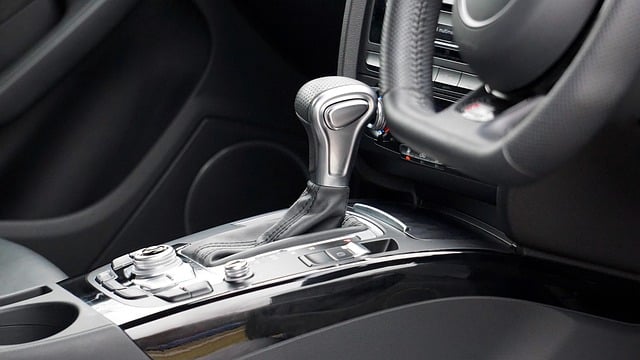
What is an Automatic Driving Test?
An Automatic Driving Test is a type of driving test that is conducted using an automatic transmission vehicle. This test is designed to assess the ability of a learner driver or driver to safely and competently operate an automatic transmission vehicle.
Definition of an Automatic Driving Test
An automatic driving test is a specific type of driving test that is taken in an automatic transmission vehicle. It is becoming increasingly popular in the UK, as more and more people are opting to take their driving test in an automatic car.
Explanation of the Difference Between an Automatic and Manual Driving Test
The main difference between an automatic and manual driving test lies in the type of vehicle used. In an automatic driving test, the candidate is tested in an automatic transmission vehicle, while in a manual driving test, the candidate is tested in a manual transmission vehicle.
In an automatic driving test, the candidate is not required to demonstrate their ability to shift gears, as this is done automatically in an automatic transmission vehicle. However, they still need to demonstrate their ability to drive safely and competently in all other areas. On the other hand, in a manual driving test, the candidate is required to use a clutch pedal and shift gears manually, in addition to demonstrating their overall driving skills.
Overview of the Benefits and Drawbacks of Taking an Automatic Driving Test
Taking an automatic driving test has both benefits and drawbacks.
The main benefit of taking an automatic driving test is that it is generally easier to learn to drive in an automatic transmission vehicle, as the candidate does not need to learn how to shift gears. This can make the learning process smoother and less stressful for some individuals. Additionally, operating an automatic transmission vehicle requires less physical effort and coordination compared to a manual transmission vehicle.
However, there are some drawbacks to taking an automatic driving test. One drawback is that individuals who pass their driving test in an automatic vehicle will only be licenced to drive automatic transmission vehicles. This means they will not be legally allowed to drive manual transmission vehicles unless they pass a separate manual driving test. Additionally, automatic transmission vehicles tend to be more expensive to purchase and maintain compared to manual transmission vehicles.
The Requirements for Taking an Automatic Driving Test
Age and licence Requirements for Taking an Automatic Driving Test
To take an automatic driving test in the UK, you must meet certain age and licence requirements. Firstly, you must be at least 17 years old. This means that you must have reached your 17th birthday before you can book and take the test. Additionally, you must have a valid provisional driving licence issued by the Driver and Vehicle licencing Agency (DVLA). This provisional licence serves as proof that you are legally allowed to drive a vehicle on public roads, but only under certain conditions, such as being accompanied by a qualified driver.
Additional Prerequisites or Qualifications Needed
In addition to the age and licence requirements, there are some additional prerequisites or qualifications that you must fulfil before taking an automatic driving test. Firstly, you must have passed the theory test, which assesses your knowledge of the rules of the road and traffic signs. This test is designed to ensure that you have a good understanding of the theoretical aspects of driving before you proceed to the practical test.
Information on How to Book an Automatic Driving Test
To book an automatic driving test in the UK, you need to follow a few steps. Firstly, you must ensure that you have a valid provisional driving licence. This licence can be obtained by applying to the DVLA and providing the necessary documentation and payment.
Once you have your provisional licence, you can book your test online through the DVSA website or by calling the DVSA booking line. When booking online, you will need to provide your driving licence number, your theory test pass certificate number, and your payment details. It is important to select the type of vehicle you will be taking the test in, which in this case is automatic.
After you have successfully booked your test, you will receive an email confirmation with all the details of your test, including the date, time, and location. It is essential to arrive at the test centre at least 15 minutes before the scheduled start time to ensure a smooth and stress-free experience.
Overall, to take an automatic driving test in the UK, you must meet the age and licence requirements, have passed the theory test, and booked your test through the appropriate channels. By fulfilling these requirements, you will be on your way to becoming a licenced and confident driver.
The Components of an Automatic Driving Test
Theory Test
The theory test is a computer-based exam that assesses a learner driver’s knowledge of the Highway Code and other road safety topics. It consists of two parts: a multiple-choice section and a hazard perception section.
Multiple-Choice Section
The multiple-choice section of the theory test consists of 50 questions, and in order to pass, a learner driver must answer at least 43 questions correctly. The questions cover a wide range of topics, including road signs, vehicle safety, and the effects of alcohol and drugs on driving. It is important for learners to study the Highway Code and other road safety topics in order to prepare for this section of the test. practising with online resources that provide multiple-choice questions can also be beneficial.
Hazard Perception Section
The hazard perception section of the theory test assesses a learner driver’s ability to identify potential hazards on the road. It consists of 14 video clips, each containing one or more hazards. The learner driver must click the mouse to identify the hazards as they appear in the video clips. To pass this section, a learner driver must score at least 44 out of 75. It is important for learners to practice their hazard perception skills by using online resources that provide hazard perception tests.
Practical Test
The practical test is a driving assessment that evaluates a learner driver’s ability to safely and competently operate an automatic vehicle. It consists of two parts: a driving section and an independent driving section.
Driving Section
The driving section of the practical test consists of a series of manoeuvres and exercises that the learner driver must complete. These include tasks such as reversing around a corner, parallel parking, and driving in different road and traffic conditions. The learner driver must demonstrate a safe and competent level of driving in order to pass this section of the test. It is important for learners to practice these manoeuvres and exercises with a qualified instructor in order to build their confidence and skills.
Independent Driving Section
The independent driving section of the practical test assesses a learner driver’s ability to make decisions and navigate without step-by-step instructions from the examiner. During this section, the learner driver will be asked to follow either a series of verbal directions or road signs to reach a specific destination. It is important for learners to practice independent driving by following road signs and using maps or navigation systems. Building confidence in independent decision-making and navigation skills will help learners perform well in this section of the test.
In order to prepare for both the theory and practical components of the automatic driving test, learners should study the Highway Code and other road safety topics. They should also practice multiple-choice questions and hazard perception tests online. Additionally, learners should practice driving skills and manoeuvres with a qualified instructor to build their confidence and competence on the road. Finally, practising independent driving by following road signs and using maps or navigation systems will help learners perform well in the test.
How to Prepare for an Automatic Driving Test
To prepare for an automatic driving test, there are several steps that should be taken. These steps include learning the national standard for driving cars, booking a driving test, taking driving lessons, and practising driving. Additionally, there are resources available to help with test preparation, such as study materials and practice tests. Finally, there are tips and tricks that can increase the chances of passing the test.
Steps to Prepare for an Automatic Driving Test
- Learn the National Standard for Driving Cars: The first step is to learn the national standard for driving cars. This can be done by referring to the national standard guidelines provided on the GOV.UK website. Understanding the skills and knowledge required to pass the test is essential.
- Take Driving Lessons: Once the national standard has been learned, it is recommended to take driving lessons. While there is no minimum number of lessons required, it is important to take as many lessons as necessary to meet the national standard for driving cars.
- Book a Driving Test: Once you have taken driving lessons and are at the required standard, the next step is to book a driving test. This can be done on the GOV.UK website. It is important to have a valid provisional driving licence to book the test.
- Practice: In addition to taking driving lessons, practising driving is crucial. This helps build confidence and ensures that the necessary skills and knowledge are acquired to pass the test. It is beneficial to practice driving in different conditions, such as different weather conditions, on different roads, and in various traffic situations.
Resources Available for Test Preparation
- Research the Test: It is important to research the automatic driving test to understand its format, the types of questions that will be asked, and the rules and regulations that must be followed. familiarising yourself with local laws and regulations related to driving in the UK is also essential.
- Study Materials: There are various study materials available to help prepare for an automatic driving test. These materials include books, online courses, and practice tests. Additionally, websites and forums provide helpful advice and tips for taking the test.
Tips and Tricks for Increasing Chances of Passing the Test
- Arrive Early and Be Well-Rested: It is important to arrive early for the test and ensure that you are well-rested. Being punctual and in a good mental state can positively impact performance.
- Follow the Highway Code: Understanding and following the rules and regulations outlined in the Highway Code is crucial. This includes speed limits, right of way, and other safety regulations. Additionally, knowing metric conversions for miles to kilometres is important as it may be tested.
- Practice Driving: Regular practice driving, whether with a driving instructor or a qualified driver friend or family member, is essential. It is important to practice driving in different conditions to gain experience and confidence.
By following these steps, utilising available resources, and implementing tips and tricks, individuals can effectively prepare for an automatic driving test and increase their chances of passing.
The Differences Between an Automatic and Manual Driving Test
Detailed comparison of the differences between an automatic and manual driving test:
The main difference between an automatic and manual driving test lies in the type of vehicle used. In an automatic driving test, the candidate will be assessed using an automatic transmission vehicle, while in a manual driving test, the candidate will be assessed using a manual transmission vehicle. This distinction is crucial as it affects the way the examiner evaluates the candidate’s ability to control the car.
In an automatic car, the examiner will focus on assessing the candidate’s control of the vehicle using the accelerator and brake pedals. On the other hand, in a manual car, the examiner will evaluate the candidate’s control of the car using the clutch, gear shift, accelerator, and brake pedals. This difference in control mechanisms necessitates different skill sets and techniques for the candidate to demonstrate during the test.
Explanation of how the testing process and requirements may vary:
Despite the differences in the type of vehicle, the testing process and requirements for both automatic and manual driving tests remain largely the same. Both tests include an eyesight test, show me, tell me questions, one manoeuvre, 38-40 minutes of driving over various road types and traffic conditions, a 1 in 3 chance of doing the emergency stop, and 20 minutes of independent driving.
The purpose of the driving test is to assess the candidate’s ability to drive safely and responsibly, regardless of the type of transmission. Therefore, the requirements for both tests are similar. Candidates must demonstrate a good understanding of the Highway Code and be able to drive safely and competently. The examiner will evaluate the candidate’s ability to follow traffic rules, make appropriate decisions, and handle various driving situations.
Common Reasons People Fail Automatic Driving Tests
Identification of Common Mistakes or Errors that Lead to Test Failure:
- Not checking mirrors properly: One common mistake that can lead to test failure is not checking the mirrors properly. During the test, it is important to regularly and correctly cheque the rear-view mirror, side mirrors, and blind spots. Failing to do so can result in not being aware of other vehicles or hazards on the road, which can lead to dangerous situations and potential failure.
- Not following the correct speed limit: Another common mistake is not following the speed limit. It is crucial to adhere to the speed limit at all times during the test. This includes not accelerating too quickly or braking too hard, as it can indicate a lack of control and awareness. Failure to follow the speed limit can result in penalties and test failure.
- Not using the correct signals: Using the correct signals is essential for safe driving and passing the test. It is important to use the turn signal, brake lights, and hazard lights when necessary. Failing to use the correct signals can confuse other drivers and lead to accidents or test failure.
- Not using the correct parking technique: Parking is a crucial skill that is assessed during the test. Failing to use the correct parking technique can result in test failure. It is important to park in the correct position, use the handbrake, and turn off the engine when required. Improper parking can lead to accidents or inconvenience to other road users.
Tips for Avoiding These Mistakes and Increasing Chances of Passing:
- Practice: The key to avoiding these mistakes and increasing the chances of passing is to practice driving as much as possible before the test. practice in different conditions and on different roads to gain confidence and improve your skills.
- Familiarise yourself with the Highway Code: Being familiar with the Highway Code is crucial for understanding the rules and regulations of the road. Study the Highway Code thoroughly to ensure you are aware of the correct procedures and guidelines for safe driving.
- Take driving lessons: Enrolling in driving lessons with a qualified instructor can provide valuable guidance and feedback. An instructor can help identify and correct any mistakes or errors you may be making, increasing your chances of passing the test.
- Stay calm and focused: Nerves and anxiety can negatively impact your performance during the test. It is important to stay calm and focused, following the instructions given by the examiner. Take deep breaths, visualise success, and trust in your abilities.
- Mock tests: Taking mock tests can help simulate the actual test experience and familiarise yourself with the format and requirements. Mock tests can also help identify any areas where you may need improvement, allowing you to focus on those areas before the actual test.
- Review feedback: If you have previously taken a driving test and failed, it is important to review the feedback provided by the examiner. Understanding the specific areas where you need improvement can help you focus your practice and increase your chances of passing in subsequent attempts.
- Stay updated with road rules: Road rules and regulations may change over time. It is important to stay updated with any changes to ensure you are driving in accordance with the current laws. This can be done by regularly reviewing the Highway Code and staying informed about any updates or amendments.
Advice on How to Overcome Nerves or Anxiety During the Test:
- Prepare thoroughly: The more prepared you are, the more confident you will feel. practice driving in various scenarios and conditions to build your skills and familiarity with different situations.
- visualise success: Before the test, take some time to visualise yourself successfully completing the test. Imagine yourself confidently driving and following all the necessary procedures. This can help boost your confidence and reduce anxiety.
- Deep breathing exercises: Deep breathing exercises can help calm your nerves and reduce anxiety. Take slow, deep breaths before and during the test to help relax your body and mind.
- Positive self-talk: Replace negative thoughts with positive affirmations. Remind yourself of your abilities and strengths. Repeat positive statements such as “I am a capable driver” or “I have prepared well for this test.”
- Focus on the task at hand: During the test, focus on the instructions given by the examiner and the road ahead. Avoid getting distracted by negative thoughts or worrying about the outcome. Stay present and focused on driving safely and confidently.
- Take breaks if needed: If you feel overwhelmed or anxious during the test, don’t hesitate to ask for a short break. Taking a few moments to collect yourself can help you regain composure and refocus.
- Trust in your abilities: Remember that you have undergone training and practice to reach this point. Trust in your abilities and believe in yourself. Confidence can go a long way in helping you overcome nerves and perform well during the test.
The Benefits of Taking an Automatic Driving Test
Overview of the Advantages of Choosing an Automatic Driving Test
Taking an automatic driving test offers several advantages over a manual test. These advantages include:
- Easier to learn: Automatic cars are generally easier to learn to drive compared to manual cars. They require less coordination and fewer manual controls, making them ideal for beginners or those with physical disabilities or coordination difficulties.
- Reduced learning time and cost: Learning to drive an automatic car can be quicker and more cost-effective compared to learning to drive a manual car. Without the need to learn how to operate a clutch and gear stick, learners can reach test standard faster, saving both time and money on driving lessons.
- Increased comfort and convenience: Automatic cars provide a more comfortable and convenient driving experience. They require less physical effort to drive, as there is no need to constantly engage and disengage the clutch or shift gears. This can be particularly beneficial for drivers with physical disabilities or coordination difficulties.
Explanation of How an Automatic licence Can Benefit Certain Drivers
An automatic licence can be particularly beneficial for drivers with physical disabilities or difficulties with coordination. Here’s how it can benefit them:
- Easier driving experience: Automatic cars eliminate the need to use a clutch and gear stick, which can be challenging for those with physical impairments. By removing these manual controls, an automatic licence makes it easier for drivers with physical disabilities to learn to drive and pass their test.
- Improved safety and confidence: For drivers with coordination difficulties, an automatic licence can enhance safety and confidence on the road. The simplified driving process of an automatic car allows them to focus more on the road and their surroundings, reducing the risk of accidents caused by struggling with manual controls.
Examples of Situations Where an Automatic licence May Be More Practical or Convenient
An automatic licence can be more practical or convenient in various situations, including:
- Unfamiliarity with manual cars: For drivers who are not familiar with manual cars, an automatic licence can be a more practical choice. It eliminates the need to learn and master the complexities of operating a manual transmission, allowing them to focus on other aspects of driving.
- Driving in busy traffic: In congested or busy traffic conditions, an automatic car can be more convenient to drive. The absence of a clutch and gear stick simplifies the driving process, making it easier to navigate through traffic and perform frequent stop-and-go movements.
- Driving in tight spaces: Automatic cars are often easier to park and manoeuvre in tight spaces. The simplified controls and smoother operation of an automatic transmission can make it more convenient for drivers who frequently need to park in cramped areas or navigate narrow streets.
- Long-distance driving: Automatic cars can be more fuel-efficient and less tiring for long-distance driving. The absence of manual gear changes allows drivers to maintain a consistent speed and reduces the physical strain of continuously shifting gears, resulting in a more comfortable and efficient journey.
In conclusion, an automatic driving test and licence offer several advantages for certain drivers, such as those with physical disabilities or coordination difficulties. It provides an easier learning experience, increased comfort and convenience, and can be more practical or convenient in various driving situations.
Final Thoughts and Summary
Final Thoughts and Summary
In conclusion, passing the UK driving test is a crucial step in becoming a qualified driver. It requires thorough preparation and practice to ensure a successful outcome. Throughout this blog post, we have discussed key points and tips to help you prepare for the test and drive safely.
Firstly, it is important to familiarise yourself with the laws and regulations by reading the theory book before the test. Understanding the Highway Code and being aware of metric conversions for miles to kilometres is essential. Additionally, avoiding distractions such as loud music, reading maps, arguing with passengers, eating, drinking, and smoking will help you maintain focus on the road.
Secondly, practising and evaluating your driving skills is crucial. Intensive driving lessons can be a cost-effective way to prepare for the test. Identifying and correcting common driving mistakes will improve your performance. It is also important to be familiar with the test area and keep an eye on road signs to anticipate any uncertainties.
Thirdly, proper preparation before the test is essential. Adjusting the car according to your physical requirements, checking the mirrors, fastening your seatbelt, turning off the radio, and putting away your mobile phone are important steps to take before starting the test. It is also recommended to use a car that you have driven before and to adjust the rear view and side view mirrors for optimal visibility.
To ensure a successful test outcome, it is important to drive carefully and not aggressively. During the test, the examiner may expect you to perform a turn in the road manoeuvre, where you should use the handbrake to prevent the car from rolling. Moving the car slowly while steering briskly and making as few turns as possible is ideal.
Throughout the process, Smart Drive UK can provide valuable support and resources. They offer a range of services, including automatic driving lessons, mock tests, and advice on the best way to approach the test. They also provide free theory tests, regular rule reminders, and online learning of the Highway Code. Contacting Smart Drive UK for further information or to book an automatic driving test is highly encouraged.
In closing, thorough preparation and practice are key to a successful test outcome. By following the tips and advice discussed in this blog post, you can increase your chances of passing the driving test and becoming a qualified driver. Remember to stay focused, follow the Highway Code, and prioritise safety on the road. Good luck on your journey to becoming a confident and responsible driver!



